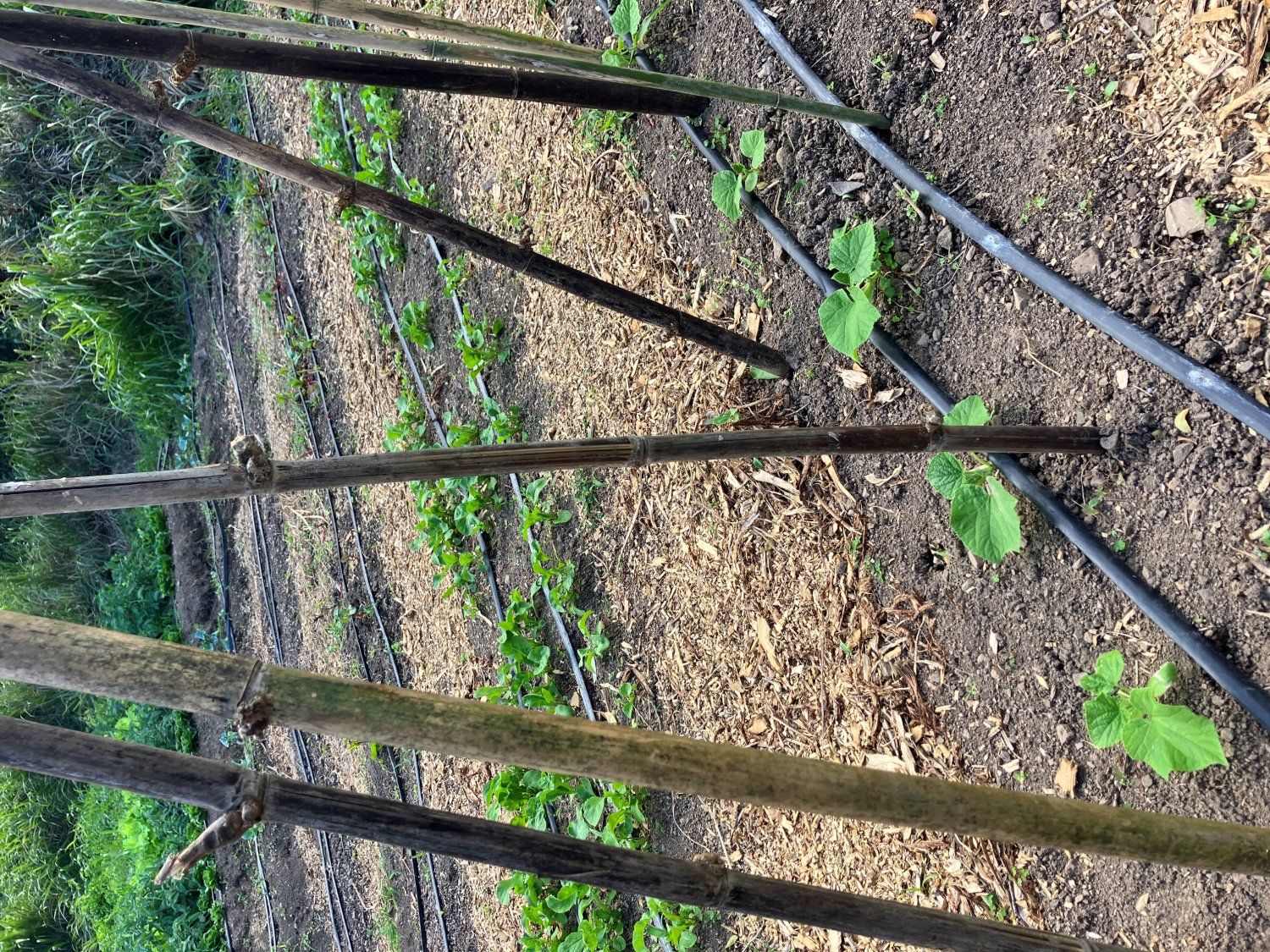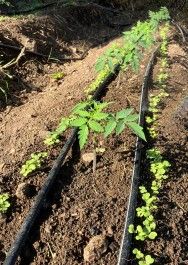Hey Y'all!
What a dry week out here on the ridge! We've had a few sprinkles, but the rains are slowing down. What a great opportunity to talk about how we deal with our limited water resources! There are a lot of strategies to reduce water loss on a farm, here are a few we use on the farm. We water as early as we can in the day to reduce evaporation from the soil surface (the plants like it better too) and use drip tape, which drips water close to the soil and evaporates much less them something like a sprinkler. We use a row cover in the form of hay/wood chips, cardboard, or woven plastic fabric (it's reusable!) which protects the soil from cracking in the sun, and reduces the number of weeds competing for our water. One other way to protect the soil surface is intercropping. Intercropping is just planting multiple types of plants together, and in our case, one example is growing some greens on either side of our tomato plants (see the picture attached to this post). This allows for a little more shade for the greens from the tomatoes as they are first starting out, but more importantly, it creates a kind of living mulch for the bed, shading it as the greens grow. This helps in maintaining the soil moisture which means the tomatoes have more consistent water (something they like), the microbiome in the soil is kept healthy, and we lose less carbon from our beds. All these water-related benefits are great on their own, but the best byproduct of intercropping? We get more greens! It's always exciting to take even very small steps to building more of an ecosystem in our farming.
As always thank you all for being a part of this journey with us! We love to share what we are doing out here: the ideas and the arugula.
Best wishes,
Jesse



